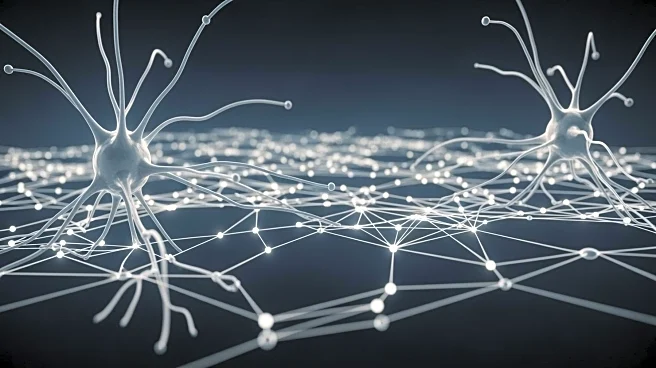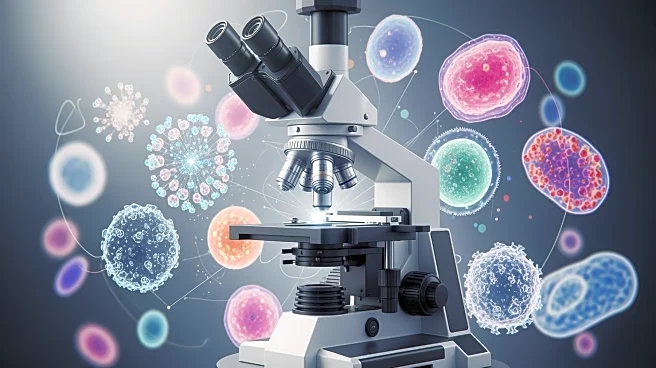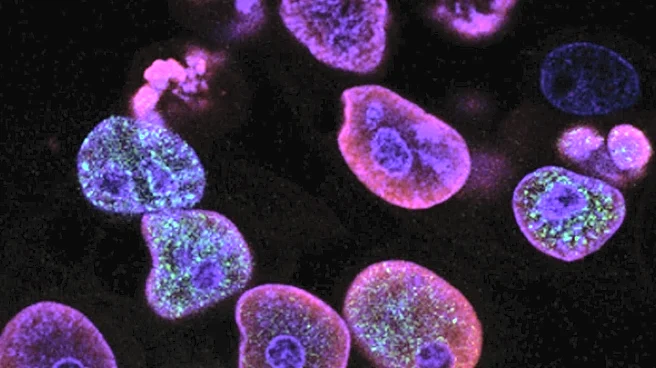What's Happening?
Researchers from the University of Science and Technology of China have developed a novel cryo-electron tomography (cryo-ET) technique to study synaptic vesicle (SV) release and recycling in neurons. This
technique provides a unified explanation for synaptic transmission, settling the debate between 'kiss-and-run' and 'full-collapse' fusion models. The study involved time-resolved cryo-ET with high 3D spatial resolution, integrated optogenetic stimulation, and plunge-freezing at millisecond intervals. The findings reveal that synaptic vesicles undergo a 'kiss-shrink-run' process during signal transmission, which could have implications for understanding neurotransmission-related diseases like Parkinson's and Alzheimer's.
Why It's Important?
This research is significant as it provides a clearer understanding of the mechanisms behind synaptic transmission, a fundamental process in neuronal communication. By resolving the debate over synaptic vesicle release models, the study could lead to better models of neurotransmission and potentially inform the development of treatments for neurological disorders. The ability to visualize and understand these processes at a detailed level could pave the way for advancements in treating diseases that affect synaptic function.












